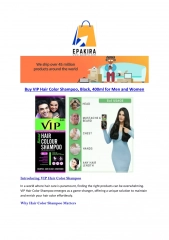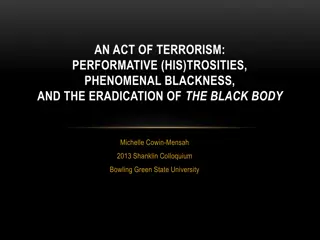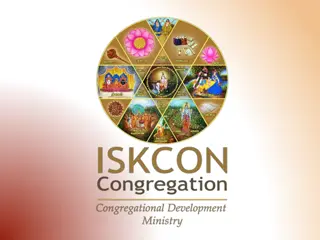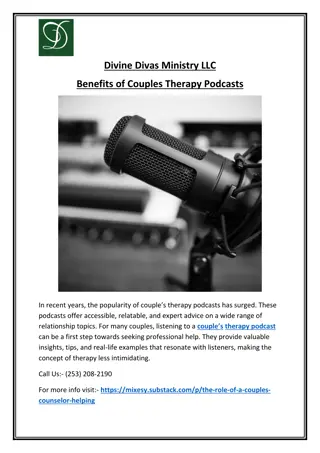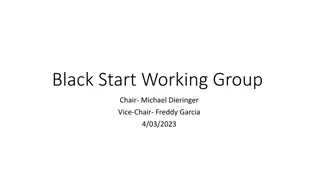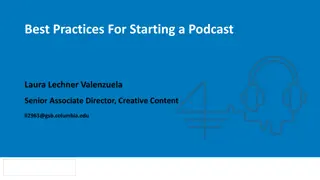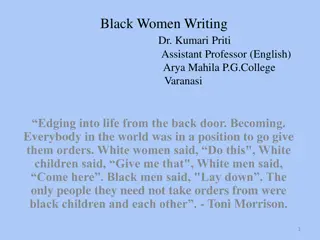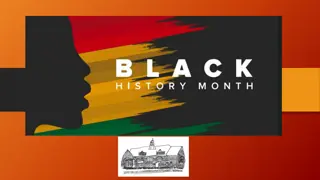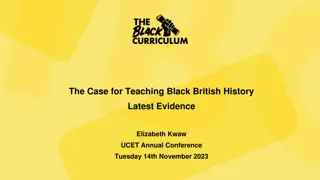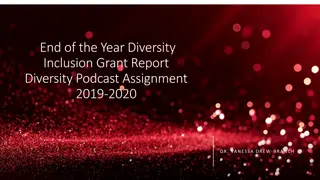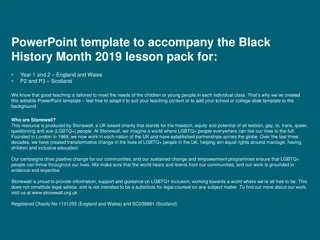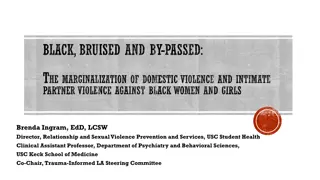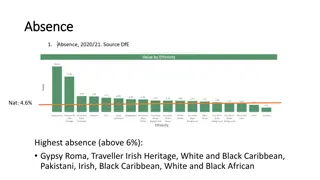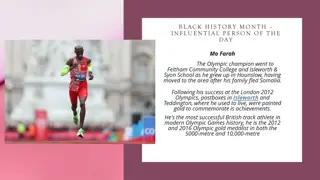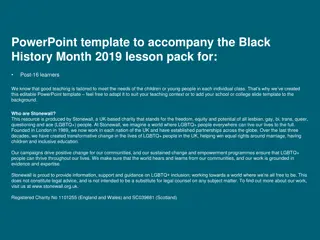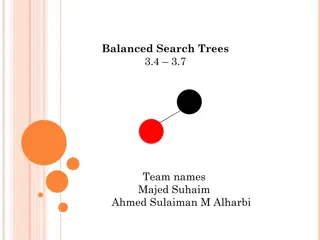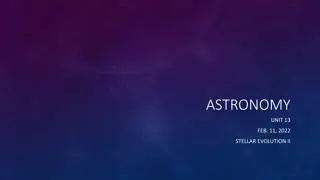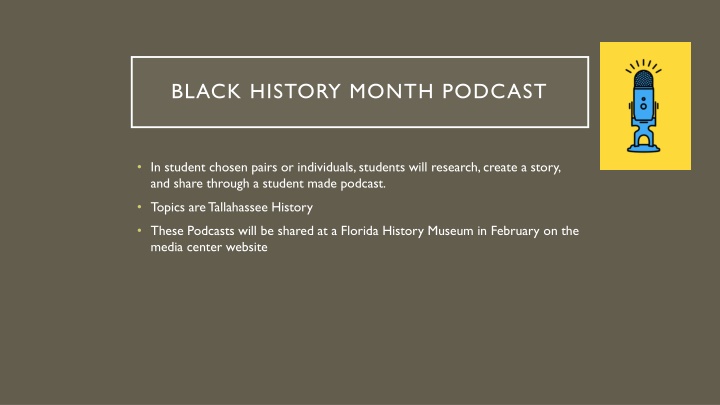
Creating a Student-Made Podcast for Black History Month
Engage students in researching and storytelling by creating a student-made podcast on Tallahassee history for Black History Month. Explore the world of podcasts, their structure, and how to engage listeners. Learn about gathering sounds and creating engaging content for an impactful podcast.
Download Presentation

Please find below an Image/Link to download the presentation.
The content on the website is provided AS IS for your information and personal use only. It may not be sold, licensed, or shared on other websites without obtaining consent from the author. If you encounter any issues during the download, it is possible that the publisher has removed the file from their server.
You are allowed to download the files provided on this website for personal or commercial use, subject to the condition that they are used lawfully. All files are the property of their respective owners.
The content on the website is provided AS IS for your information and personal use only. It may not be sold, licensed, or shared on other websites without obtaining consent from the author.
E N D
Presentation Transcript
BLACK HISTORY MONTH PODCAST In student chosen pairs or individuals, students will research, create a story, and share through a student made podcast. Topics are Tallahassee History These Podcasts will be shared at a Florida History Museum in February on the media center website
PODCAST DISCUSSION What s a podcast? What are podcasts about? Where can you hear podcasts? Why would YOU listen to a podcast? What s makes a podcaster different from a YouTuber? How does it change the way you tell a story when you re on the phone? How does it change the way you listen when you can t see someone?
SAMPLE PODCASTS Take 10 minutes, listen to a few samples of postcast(S) of your choice, then we will look at the same questions again Stuff You Missed in History Class (Links to an external site.) NPR Podcasts (a collection of a ton of links)
WHAT ARE PODCASTS What types of sounds do podcasts include? vary greatly but most include a host and can include sounds from interviews, audio from events, audio from movies or TV, and sounds from the world around them. What are some ways that podcasts are structured? there isn t one right way to tell a story. Some podcasts use narration from a host or a reporter, others feature a conversation between a group, others might be a one-on-one interview between two people. The structure of a podcast fits its content.
HOW DO I DO MY PODCAST? What is my story s driving question? How will I ensure my story is fair to the people and ideas it represents? How will I engage my audience and hold them? What are my ideal ingredients? What will the audience remember when it s over?
POSSIBLE INGREDIENTS Do this once you have completed research and written all or most of your story. This is like the transitions and font color of other projects, worry about add-ons, when you have something to add to. WHAT SOUNDS TO GATHER When you head into the field to record, what exactly are you listening for? From interviews to interactions, here s a brief rundown of some of the types of sound you ll want to gather. Scene In audio, a scene takes you to a place where some sort of action is happening that relates back to the narrative. A scene is comprised of elements such as characteristic sounds, room tone, interaction, and emotion. The goal is an audio soundscape that allows your mind to recreate whatever is going on. Characteristic Sounds These are sounds that help transport the listener to a particular place. Examples include the buzz of a drill at a dentist s office, a moo at a cattle ranch, the late bell at a school, the gavel noise of a court room. If possible in a scene, any action that creates sound should be recorded closely to bring the listener into the moment. Room tone (ambient noise) Even if you think you are recording in a silent space, every room has its own brand of quiet. At the beginning or end of each scene/interview, record between 30 seconds and 1 minute of room tone during which you and your source do not talk. Stand-up A stand-up is when a reporter does a brief, live description of what is going on and/or what they are doing in the field. Stand-ups often address the 5 W s or reporting who, what, where, when and why. They may also include narrative elements, such as how the reporter is feeling or thinking. Interview This is when a reporter/interviewer asks a source a series of questions. When recording an interview, you want to try to gather the cleanest sound possible, meaning minimal background noises. Seek out a quiet space, even if it means asking someone to turn off music or devices. Levels Levels represent the sensitivity of your recording device in other words, it sets the amplitude of the sound you gather. When setting your levels (which you should do before each interview or scene), you want to make sure the amplitude of your sound stays in the mid-range for your device. If your levels are too low, you will not capture the sound you may need. If your levels are too high ( peaking ) the sound will be distorted
WHERE I START? Research! Florida Memory Figure out a driving question A good one lingers, possibly ties it to today, or peaks the interest of middle schoolers Write your story What to include- beginning (wide topic, intro question) middle (content, details) end (answer question, review, leave the listener with something to think about)

